CESNI meeting on 17 October 2024
17/10/2024
The European Committee for drawing up Standards in the field of Inland Navigation (CESNI) met in Strasbourg (France) on 17 October 2024. The meeting was chaired by Mr Ivan Bilić-Prcić, representing Croatia. The Member States attending adopted the new editions of the ES-TRIN, the European Standard laying down Technical Requirements for Inland Navigation vessels, and the ES-RIS, the European Standard for River Information Services. In addition, a number of interim guidelines were approved. These relate to pilot projects for the storage of gaseous hydrogen. Finally, the participants approved the CESNI work programme for the period 2025-2027. The standards and the work programme will be published on the CESNI website by the end of November, one month after their adoption.

Source: Adobe Stock
Adoption of the ES-TRIN 2025/1, the standard relating to the technical requirements for vessels…
The CESNI adopted the new edition of the European Standard laying down Technical Requirements for Inland Navigation vessels, the ES-TRIN 2025/1.
This new edition of the standard, which is intended to supersede the 2023/1 edition, introduces important amendments concerning:
- Low flashpoint fuels, in particular storage and use of methanol,
- Marking of hazardous areas and labelling of fuels,
- Electric propulsion systems,
- Lithium-ion accumulators,
- Use of aluminium or fibre reinforced plastic for the construction of passenger vessels,
- Abandonment of engine parameter protocol,
- Recognition of field-testing exemption for engines,
- Filling connections and appropriate colour codes,
- Navigation and information equipment, in particular Inland AIS equipment,
- Sewage treatment plants,
- Elevating wheelhouses and transitional provisions for retractable wheelhouses,
- Automatic pressurised water sprinkler systems,
- Connecting pieces between anchor and chain,
- Sleeping cabins,
- Updating of references to the Regulations for Rhine Navigation Personnel (RPN), to the ES-RIS 2025/1 and to international standards
- but also editorial corrections.
The ES-TRIN 2025/1 is due to enter into force on 1 January 2026, in the legal frameworks of the Central Commission for the Navigation of the Rhine (CCNR) and the EU (European Union).
The CESNI also approved interim guidelines relating to the storage of gaseous hydrogen. The aim is to gain experience in this area before including these requirements in the ES-TRIN 2027/1. It is intended that the guidelines should be widely distributed by the Member States and the approved organisations in order to facilitate their use in the development of innovative vessels.
… and adoption of the ES-RIS 2025/1, in the field of information technologies
The new edition of the European standard for river information services (ES-RIS 2025/1) was also adopted at this meeting.
This new edition of the ES-RIS includes modifications that will make it possible to display information dynamically on Inland ECDIS equipment, concerning water levels or buoys. This information will be transmitted in real time through Inland AIS equipment. This edition also includes a mechanism to make inland navigation charts more reliable and to ensure that they work properly on all Inland ECDIS equipment. It contains measures for the simplification and modernisation of notices to skippers (reduction in the number of message types and introduction of a mechanism for automatic translation of certain information). Regarding electronic reporting, the ERINOT message will also be modernised with a single, more flexible and more modern message format. This format will make it possible to transmit more information useful for the safety and management of the waterway, for example on the alternative energies for vessels’ propulsion.
The ES-RIS 2025/1 is due to enter into force on 1 January 2026, in the legal frameworks of the CCNR and the EU.
Continuation of work in the field of professional qualifications
Work in the field of professional qualifications is continuing in line with the CESNI work programme. In particular, the Committee noted the progress made on future standards for crews as well as the progress of discussions on standards for electronic tools.
Adoption of the CESNI work programme for the period 2025-2027
During its meeting, the CESNI adopted its work programme for the next three years (2025-2027). Based on the strategic guidelines proposed by the CCNR Secretariat and the European Commission, the ambitious work programme is the result of intensive work of the delegations and consultations with the various inland navigation stakeholders, in particular the approved organisations representing the industry.
The new work programme reflects the priorities of the CCNR and the EU, and includes a number of tasks related to:
- new technologies and innovation, including the safe use of relevant alternative fuels and propulsion systems, and the skills to handle them, and supporting the transition towards zero-emissions;
- modern and flexible manning requirements;
- the digitalisation of inland navigation, including automated vessels, digital documents, navigation and information equipment, as well as electronic tools for recording and exchanging information on crew;
- the revision and development of standards to guarantee a high level of safety in inland navigation and to follow the technical evolution.
Participants at the meeting
The Committee meeting was attended by representatives of:
- 10 Member States: Austria, Belgium, Croatia, Czech Republic, France, Germany, the Netherlands, Poland, Romania and Switzerland;
- the European Commission, the Central Commission for the Navigation of the Rhine and the Danube Commission;
- 5 approved organisations: CEMT, EBA, EBU, ESO, IVR.
Next meetings
The next meetings of the Committee will be held on 10 April 2025 and 16 October 2025.

